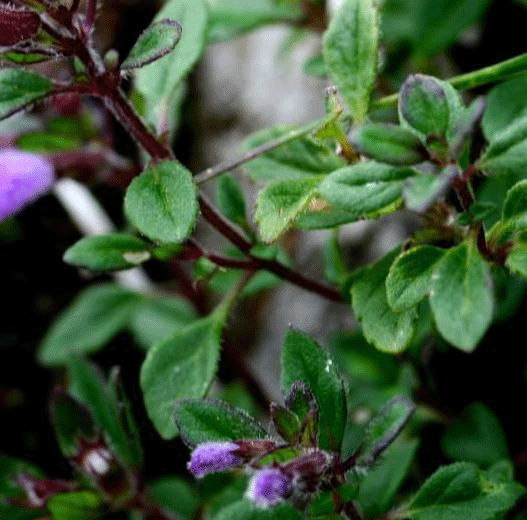Herbs are versatile. They are intriguing. They arouse our curiosity. From flavoring agents for our foods to curing our illnesses, Herbs touch all most all the spheres of all of us in one form or other.For India herbs are not new. Herbs were in use since time immemorial. Until the synthetic drugs invaded us in the British regime, Herbal medicines were the only source for curing the ailments.After the invasion of synthetic or Allopathic medicines, Ayurvedic and herbal medicines which were here for the last thousands of years were branded as ‘Alternative medicines’, while the, Allopathic medicines which were just 200 odd years old were termed as “Main stream Medicines”. What a funny situation.
More funnier was, even the Indians who are aware of the origin of Herbal and Ayurvedic medicines also believed and termed them as “ Grandma’s Kitchen Remedies.Thus, Herbal medicines lost their grandeur in the country where they were born. All the ancient civilizations, India, China and Egypt had a mindboggling knowledge of traditional medicines of Ayurveda and Herbs,
 Susruta, the ancient surgeon has been hailed as the First Plastic surgeon of the world. Rhinoplasty, which is called as “Nose Job” in the modern plastic surgery was mentioned by Susruta in his Medico surgical compendium, Susruta Samhita (500 B.C).
Susruta, the ancient surgeon has been hailed as the First Plastic surgeon of the world. Rhinoplasty, which is called as “Nose Job” in the modern plastic surgery was mentioned by Susruta in his Medico surgical compendium, Susruta Samhita (500 B.C).
Foreign medical mafias in order to retain the monopoly of Allopathy simply dismissed Herbal treatments as “Witch’s potions”.But in the recent times, the failure to cure diseases and the side effects caused by the use of Allopathic medicines made the people think seriously about the capability and capacity of Allopathic medicines. Of late, a new awareness about Herbs started appearing in the people all over the world.
Suddenly, India and its traditional ways of medicine have become the cynosure of all eyes. Tourism departments of differentcountries started a new genre of Tourism known as “Medical Tourism” made an entry. People from all over the world started swarming around the famous SPAs and Ayurvedic and Herbal centers in Kerala.
At last Herbs got back the lost glory.
Herbs are soft stemmed herbaceous plants. They die down in winter.When just plucked herbs are eaten, they are most effective. Owing to this reason, one has to grow them to derive maximum benefit out of Herbs. Herbs are so easy to grow. Even if you have a very small space, design a herb garden, instead of a routine and monotonous lawn with a border.
The beauty of herb growing lies in the fact that they need very little space and very little care. Another beauty is that Pests will never go to a herb plant. It is always better to grow only those herbs that go well with the climatic conditions you are living in. Except Herbs native to warm temperate regions, herbs native to tropical Asia will grow sans hassles all along the year.Herbs grow from seed only. Seedlings or young plants will not be available in the nurseries. Exception is holy Basil or Tulasi.
A soil well drained which is not very rich and a sunny condition are the suitable conditions for all herbs. Perennial herbs which are grown in pots need extra feeding. Though it’s a fact that as far as soil conditions are concerned herbs need little care, still a little preparation certainly helps in a big way.
A good soil constitutes of an equal quantity of solids and porous space. It means it’s necessary to keep room for water, air and plant roots.
What Herbs to grow.
When in doubt, start with the known things available to you. I mean , when you are in a doubt, what Herbs are ideal for a herb garden, start with those herbs about which you know. For example Basil or Tulasi is a well known herb for any Indian as every household is familiar with this.Popular Herb ideal for Herb Garden.
Basil also known as sweet Basil belongs to Ocimum Basilicum. Basil grows from seed. Basil is a culinary herb quite familiar with cuisines of many countries. There are several kinds of Bails with different names in different countries. The kind of Basil used in Italian food is called Sweet Basil.
All Basils are annuals. Annuals blooms for one season amd die.
Anise is another herb, also an annual like Basil is a popular herb in ancient countries, Egypt, Greece and Rome. The botanical name for Anise is ,Pimpinella anisum. It’s a flowering plant having similarity in taste with other spices like Liquorice and Fennel.
Pot marigold, is an aromatic herbaceous perennial. A perennial plant means, a plant that lives for more than two years. Pot marigold is also known as Calendula, from its genus Calendula Officinalis. It can be grown easily in sunny locations.
Caraway is a biennal also known as meridian fennel. It has a wide uses as a medicine and as a spice. Caraway works well for stomach complaints. As a spice Caraway is used as a flavoring agent.Harvest the seeds when the Caraway seeds starts begin to darken.
Fennel , the biological name of which is Foeniculum Vulgare. Fennel is a perennial. A perennial blooms each season. Its flowers are yellow in color and leaves are feathery. Fennel has both medicinal and culinary uses. It’s one of the most important spices in the Ksashmiri Pandit and Gujarati cooking. Fennel’s medicinal property as a carminative is well known.
Burnet, whose biological name is Sanguisorba minor is both a spice and medicine. A perinnial that is averse to Sun. It prefers a moist and shady place. With its cucumber taste, Burnet is a favorite item in salads and dressings.
Spearmint is a herb that can be grown in pots or even in trays which are shallow. The biological name of Spearmiont is Mentha Spcata.
Peppermint is another mint, like Spearmiont can be grown in shallow trays and pots. Both the mints facor rich and moist soil.
Though both the mints are perennials, their productivity reduces after a span of 4 or 5 yearts. If mints are frown in Pots they should be protected from the heat. If they are grown in plains, they should be grown in partial shade. Mints are widely used as a flavoring agents in confecionary. Both the mints have excellent medicinal qualities.
Allium’s most useful species are garlic, chives, and the potato onion. Garlic is grown from the cloves. All the members of the
Allium family favor rich, well drained soil. Allium’s biological name is Allum Sativum. The general name of Allium Sativum is Garlic. Garlic is well known to ancient Egyptians which has both medicinal and culinary properties.
Chives is the other family member ofAllium Schoenoprasum. Chives are a perennial plant well known for its medicinal and culinary qualities. Chives has insect repelling qualities. It is widely used in gardens to drive away the pests.
The general name of Cepa proliferum is tree onions. They are different from common onions. The preferred soil for all Alliums is rich, well drained soil. All the Allium species can be grown from seed.
Coriander, which is a famous spice is well known with the name of Dhania. Its biological name is Coriander Sativum. Coriander is a soft and hairless plant . Though all parts of Coriander is edible, dried seeds and fresh leaves are the most widely used in cooking. In many south Asian foods, coriander is the most important culinary ingredient , like in Chutneys and salads.Coriander leaves are one of the most essential ingredients in the traditional medicine of India Ayurveda. Coriander roots are used in a variety of Asian foods.
So with such a wide varity of Herbs with multivarious uses at one’s disposal, One can have both healthy and wealthy life.
A herb garden will not demand much oy your time. They can be easily grown in a limited place or even in containers. The produce from your Herb gardens are useful both as a medicine and a spice.
Images : Author's painting and Wiki media.
